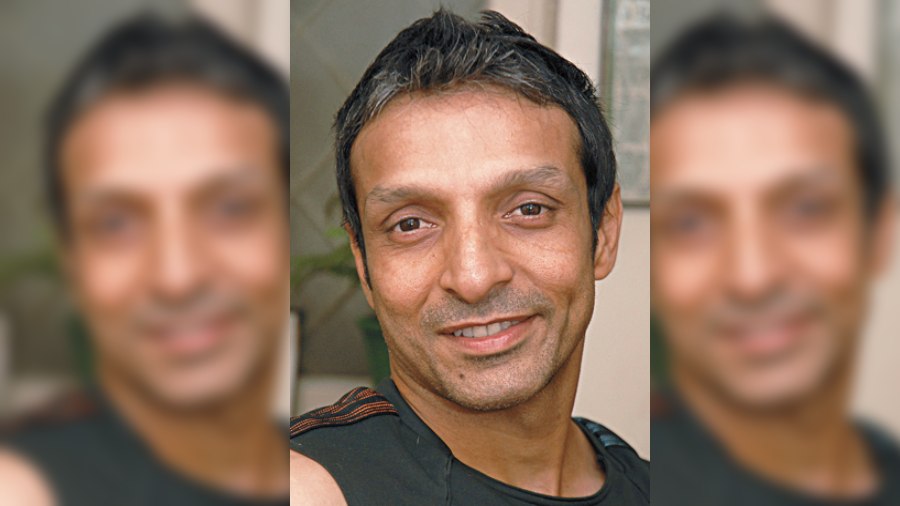One of the most significant changes in the fitness world over the last two years has been that now fitness is only a click of a button away on the Internet. With gyms being shut intermittently over the last 24 months, online training programmes and follow-along workouts have amassed huge popularity with the fitness community.
This could be viewed as a “positive” thing in terms of convenience and adherence, but also a very “negative” thing when it comes to injury prevention and training purity or even training longevity. In fact, if we go by the criterion for training as outlined by my last article, “online training” is actually not even actual training.
One of the biggest drawbacks of this kind of training is that the trainer is completely unfamiliar with and even unaware of who the person on the other side of the screen is. He has no information regarding movement patterns, skill level, any physical deficits, potential injury predisposition or cognitive abilities of the person in question. (Even if injury history is discussed, one should bear in mind that etiologies for the same injuries or dysfunction will be different for different people.)
Let’s look at a typical scenario. The average person switches on a YouTube video of a well-known fitness trainer and tries to emulate a, say, dead-lift pattern demonstrated by the latter on screen. This person may assume that the best way, or even the only way, to dead-lift would be with a 100kg barbell just because the influencer on YouTube or Instagram is doing it. I have watched numerous yoga practitioners demonstrating exercises to cure back pain on their Instagram or YouTube channel. This is dangerous because the influencer has no idea what the source or cause of the pain is yet he or she is ready with a generic exercise solution. Two people could get back pain for two completely different reasons; they may have architecturally different physiologies of the back anatomy. To suggest that the same exercises will work for both of them is dangerous.
As much as these exercises may be effective in getting stronger and fitter and keeping pain at bay, they may not be the best exercise variation for the particular person keeping in mind his/her individual physical abilities or deficits. For a person with poor back and hip rhythm, learning the hip hinge would be a better alternative to dead-lift, keeping in mind training longevity and safety. It’s obviously horses for courses.
One extremely important principle of exercise physiology is the principle of progression. This principle clearly states that subjects introduced to structured movement patterns need to be taught simpler exercises and slowly graduate to more complex ones. This gives the brain a better chance to assimilate the information and convert it into an efficient, safe and effective exercise movement. As the mind and body adapt to more difficult movements, tasks should constantly be reviewed and monitored to ensure growth.
Equal but not the same
Human beings have different anatomies, different lifestyles, different pasts (hence, memories), different goals and different physical skill levels.
However, regardless of any of these issues, at the cornerstone of our training philosophy is that every body should be moving often and training the primal pattern movements on a weekly basis. Primal pattern movements are simply those movements that ancient man developed over the course of a million years of evolution thanks to his physical intuition to cope with the harsh and hostile environment that surrounded him. To survive the hostility around him, he quickly learnt to run, jump, climb, lift and carry heavy objects and over a period of time in history, these movements became the template for the human body to conform to and fit into.
Broadly speaking, they are…
• Upper body push (horizontal/vertical)
• Upper body pull (horizontal/vertical)
• Squat (knee dominant)
• Bend or hinge (hip dominant)
• Lunge (an asymmetrical single leg stance)
• Gait (walk, run, carry and so on)
• Twist (rotation)

Every person’s exercise programme should be based on these seven movements. However, each such primal pattern movement needs to be regressed or progressed to fit individual needs. According to Garrett Sawaia, a distinguished S&C and performance specialist practising in the New England region: “Not everyone should be using the same variations per one of these patterns. That is where the beauty of smart training techniques and standing out as a credible coach really shines.” This is simply not possible online or in an Internet-based group training scenario because the trainer has no means of assessing which variation or which version is the right fit for the concerned subject.
Only a scientifically devised assessment system, like for example the FMS model, designed by Gray Cook, which is predictive in nature, will be able to help the trainer to effectively plan a programme comprising the “correct” versions of the primal movements mentioned above.
Imagine this. You have a corporate presentation and want to make a good impression by wearing this spiffing jacket you saw at the store. You are a size 46 but the store has only a 48 and 44 in stock.
Now what?
You try to buy a bigger size and look ridiculous and shapeless or do you try to squeeze into a smaller one and hold your breath throughout the length of the presentation?
I would say you try a different jacket or maybe a different store to find out the “correct” fit and look for yourself. That is the beauty of bespoke tailoring or bespoke training. The one-size-fits-all mentality just does not work in health and fitness just like many other aspects of life.
I find this happening in the world of fitness all the time. People are fitting themselves into an exercise programme that is just not the right “fit” (pun intended) for them. It should be the other way around. Exercise programmes should be tweaked and altered to suit the individual’s requirement. This is simply not possible if the exerciser tunes into some programme on the Net where the trainer is simply taking him or her through a pre-decided generic protocol, which may or may not be compatible to every person that has clicked on and checked in.
There are three very important aspects of the training methodology that we follow at our place:
• Choice or selection of exercise (based on assessment)
• Execution (correct form and kinetics)
• Feedback
For a training programme to be successful and effective over an extended period of time, the exercises have to be correctly chosen based on individual need and skill. They have to be executed with good form, tempo and technique. There has to be periodic reviews conducted and feedback provided to ensure progressive growth for the subject. All these are possible only in a bespoke environment and not via a methodology that survives on a “workout of the day” motto where all are expected to follow the same protocol and spill their guts and nuts out into a metabolic whirlpool of madness!

Ranadeep Moitra is a strength and conditioning specialist and corrective exercise coach
